#Maurice Elvey
Text

Cartel película "Luna de miel agitada" (Is your honeymoon really necessary?) 1953, de Maurice Elvey.
7 notes
·
View notes
Text
Le Giornate del Cinema Muto 2023: Pordenone Post No 5
Pordenone changes a person. I don’t just mean in the way that my bloodstream is now 80% espresso. It changes your aspirations. My dream now is to live in an apartment designed by Sonia Delaunay, watching Peter Elfelt’s dance films (they are playing before several of the screenings) all day. For loungewear, I would choose the louche shawl-collared robe sported by Jaque Catelain in Le Vertige, and…
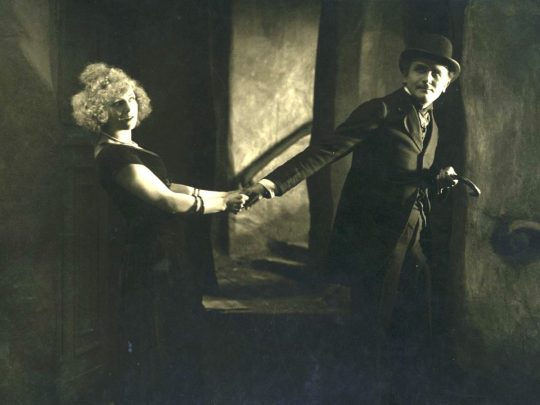
View On WordPress
#Aud Egede-Nissen#Bessie Mae Kelley#British cinema#Cecil Hepworth#Estelle Brody#featured#Frank Mottershaw#G.A. Smith#GCM42#Giornate del Cinema Muto#Gunter Buchwald#John Sweeney#Karl Grune#Marcel L&039;Herbier#Maud Nelissen#Maurice Elvey#Mindy Johnson#Peter Elfelt#Pordenone Silent Film Festival#Sonia Delaunay
2 notes
·
View notes
Text
On May 21, 1922, The Devil's Foot debuted in New York City.

#the devil's foot#the devil's foot 1922#maurice elvey#eille norwood#sherlock holmes#silent film#mystery film#drama film#crime film#crime movie#crime thriller#crime drama film#silent movies#1920s film#1920s#classic film#black and white film#black and white art#fan art#movie art#art#drawing#movie history#pop art#modern art#pop surrealism#cult movies#portrait#cult film#new york city
1 note
·
View note
Photo
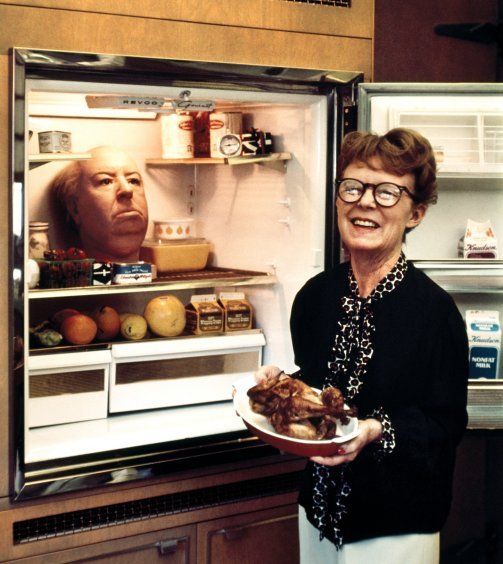
The ideal husband understands every word his wife doesn’t say.
- Alfred Hitchcock
When Alma Reville, wife of Alfred Hitchcock, died in 1982, Charles Champlin wrote in the LA Times that “the Hitchcock touch had four hands and two of them were Alma’s.” While Hitchcock received most of the credit for the 54 films he directed, Alma’s significant contribution should not be underestimated.
When Hitchcock met Reville in 1920, she had already been in the film business for five years and was well established as a cutter, scenario writer and floor secretary. He was a lowly titles artist and had to wait three years before he had reached a position in which he felt he could approach her.
They worked together at Gainsborough Studios and some there felt that she could have been a film director, although she herself was modest on this point: “I’m too small,” she said, “I could never project the image of authority a director has to project.” Other views of her tell a different story, and Alma has been described as “brisk, sometimes even brusque” and “much shrewder about people than Hitchcock, and a lot tougher.”

Alma and Alfred became Mr and Mrs Hitchcock on 2 December 1926. While she still worked on films by other directors until the mid-30s, she suppressed whatever personal ambition she may have had and devoted herself to supporting and encouraging her husband and bringing up their daughter, Pat. His eventual success allowed her to live a lifestyle she could never have dreamed of when she first began as teagirl at Twickenham Studios aged 16.
She learnt many different skills during her time in the British film industry, which stood her in good stead to offer advice wherever needed during production of Hitchcock’s films. From finding properties for him to produce, to casting, scouting locations, plotting camera angles and checking rushes, there were few areas that Alma didn’t contribute to. Once in Hollywood, she was less frequently seen on the set of his films, but was a key collaborator behind the scenes on every project.
Perhaps her greatest contribution was via the screen adaptations she worked on, for Hitchcock and others. Of the films on which she has a writing credit, it’s striking how many contain strong, well-drawn female roles. Take, for example, The Constant Nymph (Adrian Brunel, 1928), The Water Gipsies (Maurice Elvey, 1932), and The Passing of the Third Floor Back (Berthold Viertel, 1935), or Hitchcock’s Suspicion (1941), The Paradine Case (1947) and Stage Fright (1949), to name a few.

Stage Fright is the last film Alma was credited on; apparently the failure of Under Capricorn (1949), a property she had recommended to Hitchcock, led her to lose confidence in her judgement. Her absence shows; while Hitchcock’s later films are among his best regarded, the female roles tend to be less deeply examined, the action usually driven by the male protagonists. One wonders whether Marnie (1964) would have been more successful if Alma had had a hand in writing the script; despite the contribution of Jay Presson Allen, its study of an emotionally damaged woman is psychologically undermotivated.
Hitchcock was honest about his lack of understanding of the opposite sex: “I never understood what women wanted. I only knew it wasn’t me,” he once said wistfully. The onscreen portrayal of him as a man desperately attempting to seduce his blonde starlets seems a little overstated; as biopics often do, it feels as if drama has been created where none really exists. Certainly, Alma’s affair with writer Whitfield Cook, if it did take place, would have been long over by the time Psycho (1960) was being made.

While the real Alma Reville is still a little obscure, it’s only right that she is at last receiving recognition for her contribution to Hitchcock’s films. As the director said, in his speech at the presentation of his American Film Institute (AFI) lifetime award in 1979, if it wasn’t for her, he may well still have been at that gala dinner, but as “one of the slower waiters.”
#hitchcock#alfred hitchcock#quote#alma reville#alma#husband#wife#relationships#film#cinema#hollywood#britain#culture#arts#femme#icon
129 notes
·
View notes
Text

Photographer and costume designer Cecil Beaton shows Lilli Palmer some of his latest designs for costumes for her upcoming film BEWARE OF PITY (1946), directed by Maurice Elvey.
32 notes
·
View notes
Text

Technicolor Familiar Watches Too Many Conrad Veidt Movies
Part 4 of ?
Part 1 // Part 2 // Part 3

The Wandering Jew, 1933
Dir. Maurice Elvey
⭐2.5/5
Watched Nov 30, Youtube
Maybe it was my mood, maybe my expectations were too high, maybe it was the poor quality of the version I watched on Youtube, but I kept waiting for this movie to get better. It sort of did, eventually. The whole last act, especially Mathathias' powerful monologue during the courtroom/Inquisition scene, almost made up for the rest. I get what they were going for style-wise, but I think this kind of epic, mythical story could have benefited from some more grounded writing and performances. Either that or it should have gone harder in the other direction to be more impressionistic, more dreamlike. In the end I feel like it didn’t know what kind of movie it wanted to be.
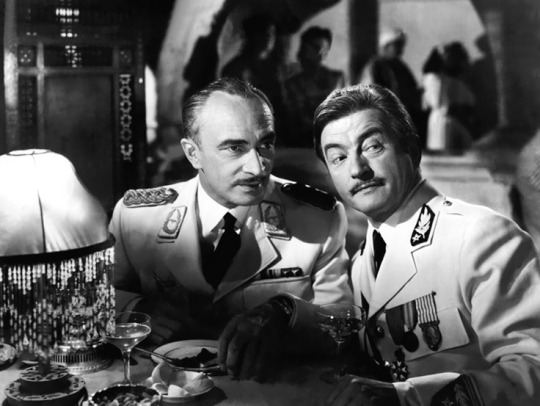
Casablanca, 1942
Dir. Michael Curtiz
⭐4/5
Watched Dec 2, Max
The balls they had to make this movie in 1942. I think the first time I saw this a few years ago I must not have been paying very close attention. This time around I definitely appreciated the whole thing a lot more. The cast, the production design, the lighting, the atmosphere are all pitch perfect. Why not 5 stars then? Maybe because I'm greedy and I want more. This is the only film on this list so far that I wouldn't mind being longer. I want to get to know all the supporting and side characters more. It's nice to see Connie with an ensemble of other excellent actors for a change. It really let him off the hook to be purely unlikeable and not have to carry the movie. As Strasser, he's ice cold with only the slightest trace of camp (which was much more pronounced in the previous year's All Through the Night). He played a lot of villains and unfortunately was typecast in these kinds of roles late in his career, but I think he finally got to showcase here his fervent contempt for the Nazis by playing this utterly icky guy with zero redeeming qualities. He understood the assignment.

Whistling in the Dark, 1941
Dir. S. Sylvan Simon
⭐2.75/5
Watched Dec 3, Archive.org
This makes All Through the Night look like auteur cinema. But once again Connie sells it by being totally deadpan amongst all the slapstick tomfoolery. Love to see him with a bunch of underlings, especially at the beginning as they hatch their plan. It's clear he's having a lot of fun with his line delivery. Kind of wish there was more cult/con artist stuff for him to do, but the premise is enjoyable in an absurd way. I love the two ladies, Ann Rutherford and Virginia Grey; they sort of make up for how obnoxious Red Skeleton is. Most of the bits go on far too long though. My main take away from this movie is that I'll now be leaving every future interaction saying, "We part in radiant contentment."
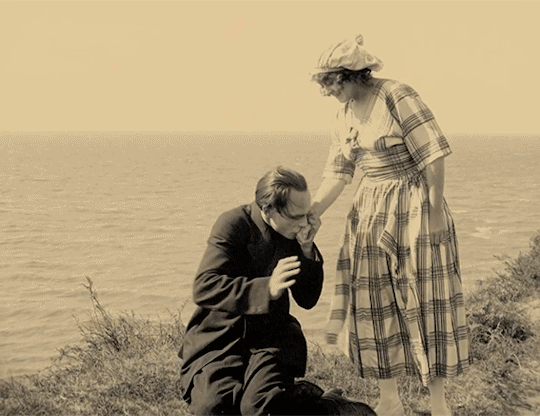
Der Gang in die Nacht, 1921
Dir. F. W. Murnau
⭐2.5/5
Watched Dec 10, Archive.org
It's been a minute since my last foray into silent Connie, so I wanted to watch Kreuzzug des Weibes which recently surfaced on Youtube only to have since mysteriously disappeared. Figures. So I watched this instead. A lot of these movies, silents and talkies, have rushed and disjointed endings and this is no exception. The restoration of the version on Archive is amazing, the quality is just beautiful. But I had a hard time connecting with this one, and I don't think it has anything to do with the expressionistic performances. I feel like they were maybe trying to say something about science vs art, while also throwing in messages about infidelity, etc. I don't know what I wanted, but this wasn't it. But I can't complain too much, Connie's romantic anguish is a thrill to watch. When he wakes up after recovering from surgery, his intensity is something else. It's crazy how palpable his performances are across so many years.
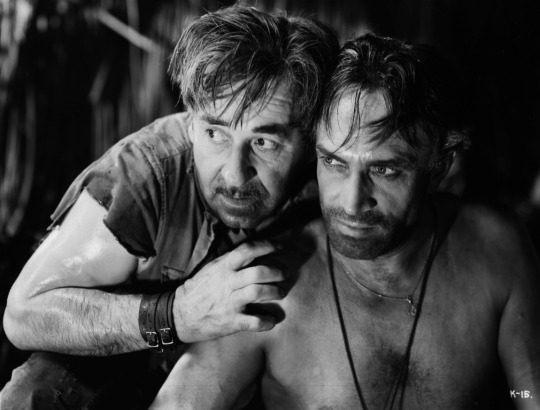
King of the Damned, 1935
Dir. Walter Forde
⭐3.5/5
Watched Dec 11, Archive.org
This is only 3.5 because of the absolutely god awful quality of the version that's on Archive -- it's like someone did 18 shots of jäger, picked up a camcorder and recorded a bootleg of the movie on tv. It made me kind of seasick. Probably the worst copy of any of these movies I've seen so far. And that really sucks because I actually really liked the movie. It's surprisingly progressive in a way I wasn't expecting. The conversation it's trying to start about prison reform is still really relevant. And we get wet, sweaty, grimy shirtless Connie gently caressing other men in the jungle. I wish we had learned his name at the end, once the revolt was successful and the prisoners had control of the island, it would have been really satisfying for him to reclaim his identity again. But I also completely understand that it needed to not be about him, that he was committed to serving and advocating for the collective. Ugh, love it.
#my writing#conrad veidt#the wandering jew#casablanca#whistling in the dark#der gang in die nacht#king of the damned
6 notes
·
View notes
Text
The Incredibly Futuristic Tatra T77 From 1934
The Tatra T77 is a relatively unknown vintage car today however its influence on automotive aerodynamics was gargantuan. It was the first production automobile with a streamlined, wind tunnel-tested body and it was so futuristic looking that science fiction director Maurice Elvey used one in his 1935 film Transatlantic Tunnel.
So good was the aerodynamic design of the T77’s body that its…

View On WordPress
2 notes
·
View notes
Text
Books read and movies watched in 2022, and whether I’d recommend them:
Books:
The Seven Deaths of Evelyn Hardcastle (Stuart Turton): Yes
The Devil and the Dark Water (Stuart Turton): No
At Bertram’s Hotel (Agatha Christie): Yes
A Murder is Announced (Agatha Christie): Eh
The Murder at the Vicarage (Agatha Christie): Yes
Destination Unknown (Agatha Christie): Eh
A Pocket Full of Rye (Agatha Christie): Eh
Pavilion of Women (Pearl S. Buck): Yes
O Caledonia (Elspeth Barker): Yes
The Mask Carver’s Son (Alyson Richman): Yes
(Poetry) Ordinary Words (Ruth Stone): Yes
(Poetry) Thirst (Mary Oliver): No
(Poetry) Howl & Other Poems (Allen Ginsberg): Yes
Movies:
Lady Bird (2017, Greta Gerwig): Yes
High Treason (1929, Maurice Elvey): Eh
Brief Encounter (1945, David Lean): Yes
Les Visiteurs du Soir/The Devil’s Envoys (1942, Marcel Carné): Yes
Casablanca (1942, Michael Curtiz): No
Rear Window (1954, Alfred Hitchcock): Yes
North By Northwest (rewatch) [1959, Alfred Hitchcock]: Yes
Once Upon A Time in America (1984, Sergio Leone): NO
A River Runs Through It (1992, Robert Redford): No
The African Queen (1951, John Huston): No
Tokyo Story (1953, Yasujirō Ozu): Eh
Rebecca (1940, Alfred Hitchcock): No
I Married a Witch (1942, René Clair): No
La Belle et la Bete (1946, Jean Cocteau): No
Medea (1969, Pier Paolo Pasolini): No
The Letter (1940, William Wyler): Yes
Among the Living (1941, Stuart Heisler): No
Johnny Come Lately (1943, William K. Howard): Yes
Thunderbolt (1929, Josef von Sternberg): Yes
The Plane that Disappeared (1961, Reginald Le Borg): No
Larceny (1948, George Sherman): Yes
The Woman in the Window (1944, Fritz Lang): No
The Spiral Staircase (1946, Robert Siodmak): No
High Sierra (1941, Raoul Walsh): No
Raising Arizona (1987, Joel Coen): YES
Close-Up (1990, Abbas Kiarostami): Yes
Night Train to Munich (1940, Carol Reed): Yes
Mister 880 (1950, Edmund Goulding): Yes
Encanto (2021, Jared Bush & Byron Howard): Yes
2 notes
·
View notes
Text

Trolley advert for The Flag Lieutenant, a 1926 British war film directed by Maurice Elvey and starring Henry Edwards, Lilian Oldland and Dorothy Seacombe. It is based on the play The Flag Lieutenant by W.P. Drury.
The above Capitol Theatre poster comes from the Vancouver Sun article by John Mackie seen here:
https://vancouversun.com/news/local-news/vintage-streetcar-posters-evoke-lost-era-of-vaudeville-silent-movies-and-happyland
This film wasn’t actually based on a WWI narrative, but rather is a fictional storyline that focuses on life in the British Navy. It falls in the interwar period.
Here’s the review from the Sun, from June 6, 1927:

Then later during WWII, this film was released in the US:
The Flight Lieutenant is a 1942 American drama war film starring Pat O'Brien as Sam Doyle, a disgraced commercial pilot who works to regain the respect of his son (Glenn Ford) against the backdrop of World War II. (with assistance from Wikipedia).
Here’s the review from the Province, September 30, 1942:


4 notes
·
View notes
Text

High Treason (Maurice Elvey, 1929) | Art direction by Andrew Mazzei
L'architecture dans le cinéma muet at Fondation Jérôme Seydoux-Pathé
0 notes
Text

Diana Dors-David Tomlinson "Luna de miel agitada" (If your honeymoon really necessary?) 1953, de Maurice Elvey.
7 notes
·
View notes
Text
Research on Marie Belloc-Lowndes's novel, The Lodger (1913)
Marie Belloc-Lowndes is an English author.
The novel is a short story that was published in 1913 on the daily telegraph.
The story is based on the Whitechapel murders of 1888, committed by Jack the Ripper. While some of the traits of the novel's killer have been attributed to Forbes Winslow's findings about the original murderer, Lowndes was also influenced by the Lambeth Poisoner's physical appearance.
The book tells the story of a husband and wife who own a lodging. They let in Mr. Sleuth, who is their only guest in a long time and therefore their only chance to salvage their business. As new murders happen in the surrounding neighborhoods, the couple slowly begin to suspect their lodger might be the one responsible for them.
The novel has been considered an example of how to write a psychological suspense due to its focus on the effects the serial killer has on the main cast of characters, instead of on the murders themselves.
The Lodger is considered to be both the first and the best fictional adaptation of the Jack the Ripper story. The book was also heavily praised by critics for the sense of atmosphere it created.
The first adaptation of Belloc Lowndes novel was a silent movie directed by Alfred Hitchcock. The movie was titled 'The Lodger: a Story of the London Fog.'
In 1932, another movie based off the novel was made titled Phantom Fiend, and was directed by Maurice Elvey. In 1944 another movie was released, this time by John Brahm. In 1953, yet another adaptation was made called 'Man in the Attic."
The novel was also adapted to television and radio.
Marie Belloc-Lowndes's writing can be considered feminist in a way. In the novel she had the main female character be the one person capable of solving the mystery behind the murders that eluded thousands of officers and detectives. For her, the novel gives agency to women in a situation of violence and misogyny. Although the reader sees the perspective of several characters throughout the story, the one that is most prevalent is Mrs. Bunting's, who is also the first of them to realise that the new lodger might be the killer that the Scotland Yard is after. Mrs. Bunting is also treated as an agent in the novel, instead of being an object or victim. I wanted to include this in my own narrative by focusing my story on the female ant character.
1 note
·
View note
Photo
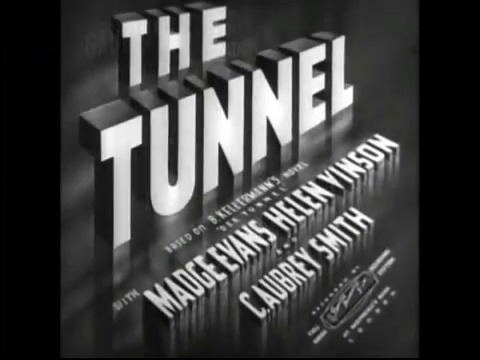

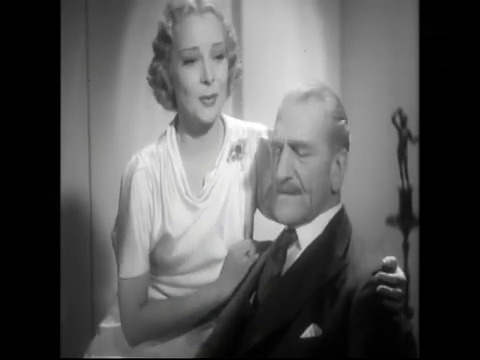
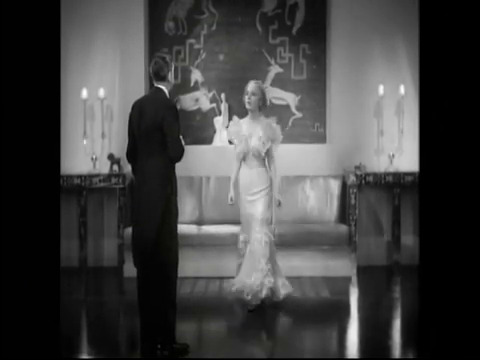
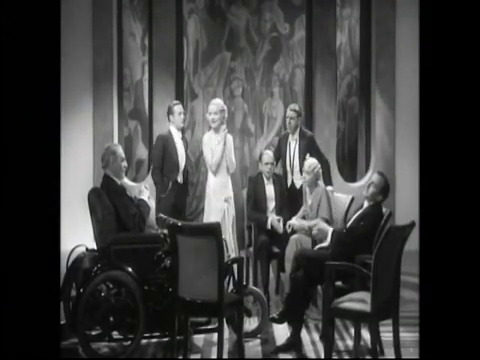

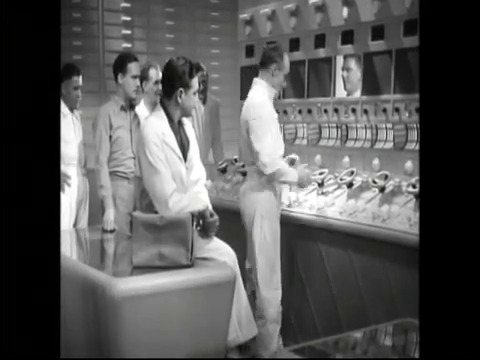
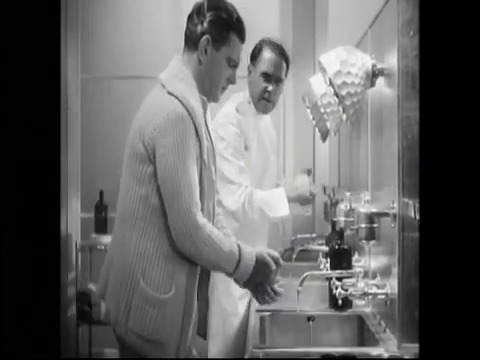
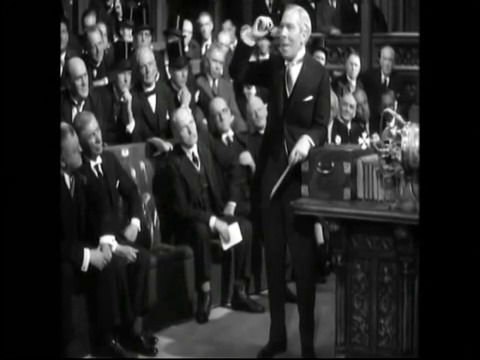
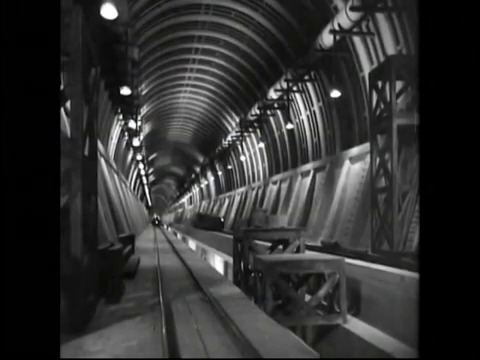
The Tunnel (1935)
Film review #523
Director: Maurice Elvey
SYNOPSIS: Richard McAllan is an engineer who has a dream to build a tunnel between England and the United States. He convinces a group of billionaires including Lloyd, the world’s richest man, to fund the project, but there are many other problems that present themselves on the way to the projects completion, both in terms of McAllan’s private life, and those looking to profit from the tunnel’s failure...
THOUGHTS/ANALYSIS: The Tunnel (released as Transatlantic Tunnel in the U.S.) is a 1935 science-fiction film based on the novel Der Tunnel by Bernhard Kellermann. The film opens up with an orchestra performing for a select group of billionaires at the home of Lloyd, the richest man in the world. Engineer Richard McAllan is also there, to propose the construction of a tunnel underneath the Atlantic Ocean, connecting England and the United States. After much persuading, he manages to get their support, and work on the most ambitious project in human history begins. The plot of the film goes through all the drama and problems that would be associated with such a project, and splits its time between looking at the tunnel itself and the logistical problems, and also how the project impacts McAllan and his relationships with those around him. The balance between the two is well executed, and everything flows and connects nicely. There are a few changes from the novel and the 1915 film version, but they are mostly minor. The setting seems to be a near-future setting, where the Channel Tunnel was completed in 1940, so it’s a different vision of the future rather than what was actually happening in 1940 in Europe.
The tone of the film is very uplifting and optimistic, and McAllan is presented as an idealist who wants to use this project to change the world for the better. We also see political leaders in the U.S. and U.K. similarly making speeches in the U.K. parliament and U.S. congress to this effect. The film stands out in two respects: First, the acting is pretty good for the era, and the emotional scenes are delivered very well. The dated romance stuff and traditional roles still feel dated, but when the film needs to convey more raw emotion, it does so very convincingly; more so than any other film I’ve seen of the era. The cast isn’t too varied, but everyone has a specific role to play, and you get a good sense of what they’re there for.
The second stand out part of this film is the sets and design: you really get a sense of the tunnel’s massive scale in these large sets full of machinery, filled with crowds of men digging. The Tunnel is actually the third incarnation of the film released over two years, with the German and French versions released first, and the English version released after. Each version uses the same sets and mostly the same script, but changes the actors for the different languages (this was before dubbing was a thing). As such, the sets were probably meant to last. The English version also has a different director, which means it deviates a little more from the other two. Perhaps the big difference between the film and the novel is that the film presents a more evenly optimistic tone; and that the end justifies the struggle of the development of the tunnel. The novel focuses much more on the hardships though, and McAllan (Mac Allan in the original German) becomes a worldwide reviled figure. The ending is also a high note, marking the completion of the tunnel and new prosperity for “the English speaking world,” but we never see how this takes shape, but since the film is about the construction and completion of the tunnel, and dealing with it’s consequences would probably dilute that focus. The novel does look a little closer at the effects of the tunnel’s completion, but it’s not entirely optimistic: the tunnel is already shown to be updated (the completion of the tunnel takes a lot of years to finally complete, and by then, it had already become obsolete, as airplanes were now able to carry people across the Atlantic faster than travelling through the tunnel. With regards to this film version of The Tunnel, it has some very strong points in both the acting and the design, and really brings the story to life in this regard. Some parts are a bit predictable and rooted in the old-fashioned values of the day, but there’s enough to make it an interesting watch if you like the films of this era.
0 notes
Photo
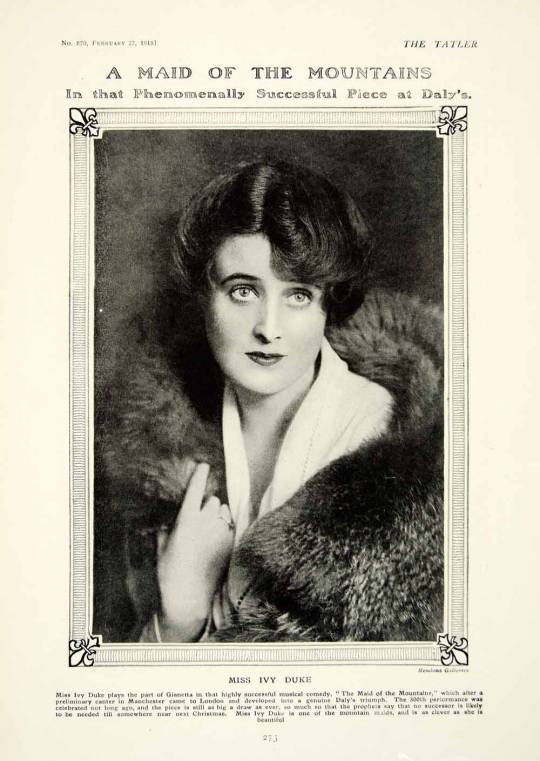
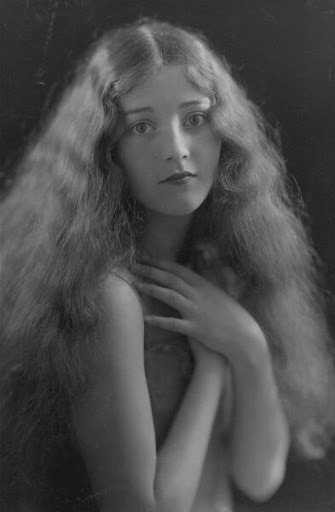



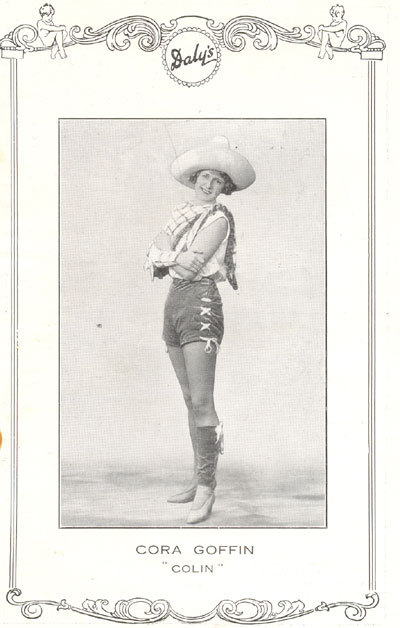
Sons Of The Silent Age. Part One.
1) Ivy Duke (1896-1937) starred in the 1920 hit film The Lure of Crooning Water. She drank herself to death after her career took a downward turn.
2) Sybil Rhoda (1902-2005) starred in Alfred Hitchcock’s Downhill opposite Ivor Novello. Interviewed at age 101, she said "I'm amazed I've existed so long. I'm surprised about the whole thing. I can't get over it,"
3) Maurice Elvey (1887-1967) was one of the most prolific film directors in history, making nearly 200 films between 1913 and 1957. During the silent film era, he directed as many as 20 films per year. His adaptations of Sherlock Holmes were praised by Arthur Conan Doyle. In order to film the sinking of a troop ship, Elvey built a water tank in his own back garden, spending two months to fill it up via his kitchen tap.
4) Victoria Hopper (1909–2007) was a British actress popular during the 1930s. From 1934 until 1939, she was married to film director Basil Dean, who grew interested in Hooper due to her resemblance to his former lover Meggie Albanesi (1899-1923). Dean cast her in several major films, which did badly at the box office.
5) Chrissie White (1895-1989) appeared in more than 180 films. White married director Henry Edwards, and they became one of the most newsworthy celebrity couples of the 1920s. They had two children, and remained together until his death in 1952.
6) Cora Goffin (1902-2004) was an actress on the London stage. She acted in two silent films, during which she leapt from a moving horse and threw herself beneath a moving car in Paris. There were reports that she had her legs insured for £20,000 with Lloyd's of London. Goffin married theatre manager Emile Littler in 1933. She became Lady Littler when Emile was knighted in 1974
#shepperton babylon#sepia#1920s#1930s#cora goffin#chrissie white#victoria hopper#maurice elvey#sybil rhoda#ivy duke#vintage photography#matthew sweet#sherlock holmes#arthur conan doyle#alfred hitchcock#the lure of crooning water#old britain#ivor novello#david bowie#henry edwards
15 notes
·
View notes
Photo





The Clairvoyant (1935) Maurice Elvey
April 15th 2022
#the clairvoyant#1935#maurice elvey#claude rains#fay wray#jane baxter#mary clare#ben field#the evil mind
16 notes
·
View notes
Photo


High Treason (Dir. Maurice Elvey, 1929).
64 notes
·
View notes